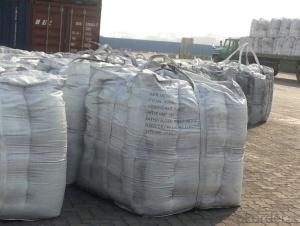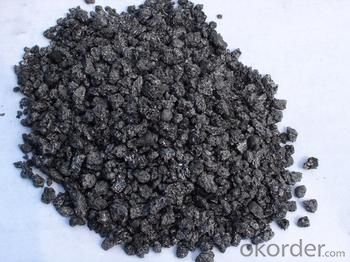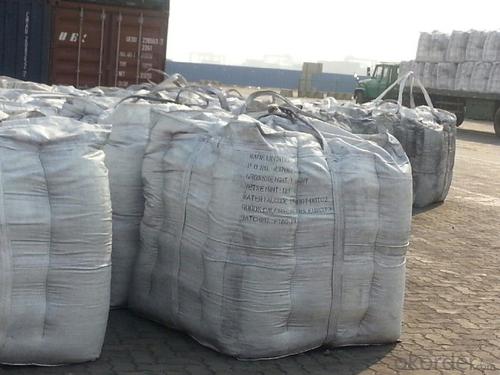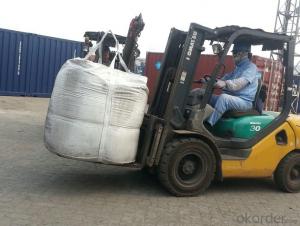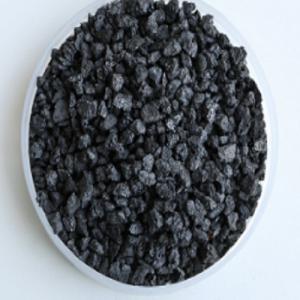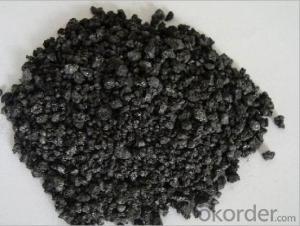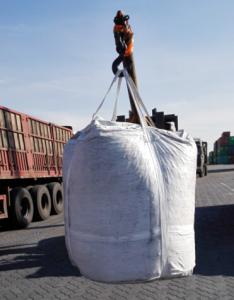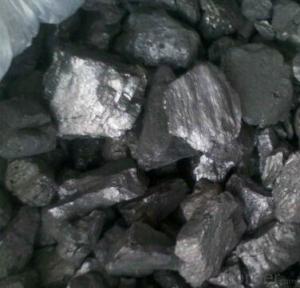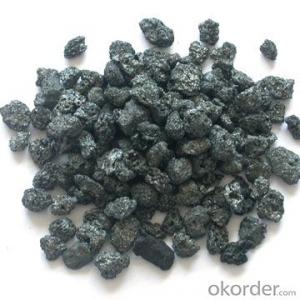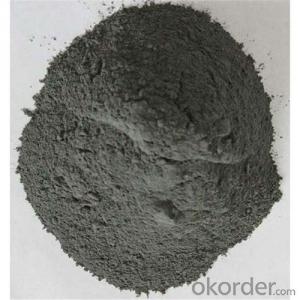Calcined Petroleum Coke/Calcined Petroleum Coke Price
- Loading Port:
- Tianjin
- Payment Terms:
- TT OR LC
- Min Order Qty:
- 1 m.t.
- Supply Capability:
- 10000000 m.t./month
OKorder Service Pledge
OKorder Financial Service
You Might Also Like
1.Structure of Calcined Petroleum Coke Description
Calcined Petroleum Coke is made from raw petroleum coke,which is calcined in furnace at a high temperature(1200-1300℃).CPC/Calcined Petroleum Coke is widely used in steelmaking,castings manufacture and other metallurgical industry as a kind of recarburizer because of its high fixed carbon content,low sulfur content and high absorb rate.Besides,it is also a best kind of raw materials for producing artifical graphite(GPC/Graphitized Petroleum Coke) under the graphitizing temperature(2800℃).
2.Main Features of the Calcined Petroleum Coke
High-purity graphitized petroleum coke is made from high quality petroleum coke under a temperature of 2,500-3,500°C. As a high-purity carbon material, it has characteristics of high fixed carbon content, low sulfur, low ash, low porosity etc.It can be used as carbon raiser (Recarburizer) to produce high quality steel,cast iron and alloy.It can also be used in plastic and rubber as an additive.
3. Calcined Petroleum Coke Images
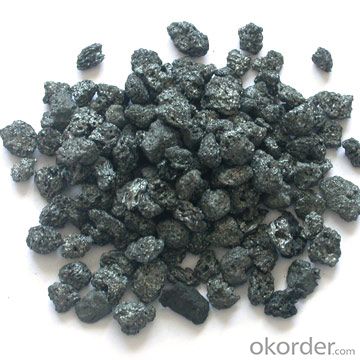
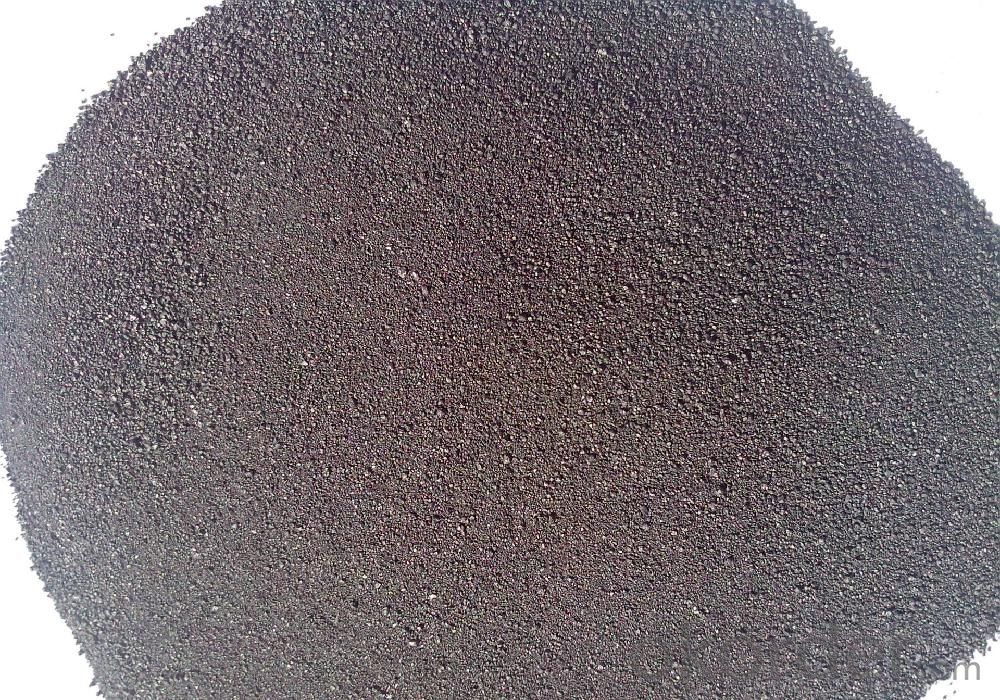
4. Calcined Petroleum Coke Specification
| CHEMICAL PROPERTIES | |||
| Unit | Limit Value | ||
| A | B | ||
| FC | % | 98.5 min | 98.5 min |
| S | % | 0.5 max | 0.8max |
| Ash | % | 0.8 max | 0.9max |
| Volatile Matter | % | 0.7 max | 0.8max |
| Moisture | % | 0.5 max | 0.5max |
| PHYSICAL PROPERTIES | |||
| Size | mm | 0~1 and 1~10 (90% min) | |
| or as per buyer's requirement | |||
| PACKING | 25kgs/bag or 1000kgs/jumbo bag | ||
5.FAQ of Calcined Petroleum Coke
1). Q: Are you a factory or trading company?
A: We are a factory.
2). Q: Where is your factory located? How can I visit there?
A: Our factory is located in ShanXi, HeNan, China. You are warmly welcomed to visit us!
3). Q: How can I get some samples?
A: Please connect me for samples
4). Q: Can the price be cheaper?
A: Of course, you will be offered a good discount for big amount.
- Q: When will amines be fertilized?
- Carbon is the most commonly used varieties of amine fertilizer, with nitrogen and phosphorus fertilizer, fertilizer use, fertilizer is generally 120 days or so, the suitable conditions of temperature, moisture in the next 50 days after applying fertilizer best.Carbon amine is a white compound that is granular, plate-like or columnar crystalline. Because ammonium bicarbonate is a carbonate, it must not be placed with acids because the acid reacts with ammonium bicarbonate to form carbon dioxide, which causes ammonium carbonate to go bad. However, in the rural areas, ammonium carbonate and acid reaction are also used. The ammonium bicarbonate is placed in the vegetable greenhouse, and the greenhouse is sealed, and ammonium bicarbonate is placed at the top, adding hydrochloric acid. At this point, the amines react with hydrochloric acid to produce ammonium chloride, water, and carbon dioxide. Carbon dioxide can promote plant photosynthesis, increase vegetable production, and the resulting ammonium chloride can also be used as fertilizer again. Ammonium bicarbonate in the chemical formula of ammonium ion, is an ammonium salt, and ammonium salt and alkali can not be put together, so ammonium bicarbonate and sodium hydroxide or calcium hydroxide should not be put together
- Q: How does carbon affect the formation of droughts?
- Carbon dioxide (CO2) and other greenhouse gases play a significant role in the formation of droughts. The increase in carbon emissions from human activities, such as burning fossil fuels and deforestation, has led to a rise in atmospheric CO2 concentrations. This increase in CO2 acts as a heat-trapping blanket, causing the Earth's average temperature to rise, a phenomenon known as global warming. Global warming intensifies the hydrological cycle, which is the process of evaporation, condensation, and precipitation that regulates the availability of water on Earth. As the atmosphere becomes warmer, evaporation rates increase, leading to more moisture being stored in the air. This increased moisture content can result in more intense rainfall events and potentially severe storms in certain regions. However, while there may be an increase in extreme rainfall events, global warming also leads to a reduction in overall precipitation in many areas. Higher temperatures cause increased evaporation from soil, lakes, and rivers, which depletes available water sources. As a result, droughts become more frequent and severe. Additionally, the warming climate alters the patterns of atmospheric circulation, such as the jet stream, which influences weather systems. These changes can result in shifts in precipitation patterns, causing more regions to experience prolonged dry spells and exacerbating the risk of drought. Furthermore, the impacts of carbon emissions and global warming extend beyond the direct effects on precipitation. Rising temperatures also accelerate the rate of evapotranspiration, the process by which water is transferred from the land to the atmosphere through evaporation from the soil and transpiration from plants. This increased evapotranspiration leads to higher water demand from vegetation and crops, which can further contribute to water scarcity and drought conditions. In conclusion, carbon emissions and the resulting global warming significantly affect the formation of droughts. The rise in CO2 concentrations traps heat in the atmosphere, leading to increased evaporation rates, altered atmospheric circulation, and shifts in precipitation patterns. These factors, combined with higher rates of evapotranspiration, result in more frequent and severe droughts. Addressing carbon emissions and mitigating climate change are crucial steps in reducing the risk and impact of droughts in the future.
- Q: How does carbon dioxide affect global warming?
- Global warming is caused by carbon dioxide, one of the main greenhouse gases. When carbon dioxide is released into the atmosphere, it traps heat from the sun and prevents it from escaping into space. This leads to a rise in the Earth's overall temperature, a phenomenon known as the greenhouse effect. The Earth's atmosphere acts like the walls of a greenhouse, trapping heat and warming the planet. Human activities, such as burning fossil fuels, deforestation, and industrial processes, have significantly increased the amount of carbon dioxide in the atmosphere. These activities have released large amounts of carbon dioxide that would have otherwise remained underground for millions of years. As a result, the concentration of carbon dioxide in the atmosphere has reached levels not seen in hundreds of thousands of years. The increase in carbon dioxide levels intensifies the greenhouse effect and worsens global warming. Rising temperatures have negative effects on the Earth's climate system, including the melting of polar ice caps and glaciers, which leads to rising sea levels. This poses a threat to coastal communities and low-lying areas, increasing the risk of flooding and erosion. Additionally, global warming disrupts weather patterns, resulting in more frequent and severe extreme weather events like hurricanes, droughts, and heatwaves. Moreover, global warming impacts ecosystems and biodiversity. Many species are unable to adapt to rapid temperature changes, resulting in habitat loss and an increased risk of extinction. Coral reefs, for instance, are highly sensitive to temperature changes and are experiencing widespread bleaching events due to warmer ocean temperatures. Efforts are being made to reduce greenhouse gas emissions and mitigate the effects of carbon dioxide on global warming. Measures such as transitioning to renewable energy sources, improving energy efficiency, reforesting, and implementing sustainable practices are being taken to curb carbon dioxide emissions and lessen the impacts of global warming.
- Q: What are the effects of carbon emissions on the Earth's temperature?
- The Earth's temperature is significantly impacted by carbon emissions, particularly carbon dioxide (CO2), which is due to the greenhouse effect. The greenhouse effect is when certain gases in the Earth's atmosphere trap heat from the sun and prevent it from escaping into space, thus causing the planet to warm. When carbon emissions are released into the atmosphere, they act like a blanket, trapping more heat and making the greenhouse effect worse. This results in global temperatures increasing, commonly known as global warming. The main source of carbon emissions is the burning of fossil fuels such as coal, oil, and natural gas for energy production, transportation, and industrial processes. The accumulation of carbon dioxide and other greenhouse gases in the atmosphere has led to a steady rise in global temperatures over the past century. This temperature increase has various consequences for the Earth's climate system and ecosystems. One immediate impact of increased carbon emissions and global warming is the melting of polar ice caps and glaciers. As temperatures rise, ice melts at a faster rate, causing sea levels to rise. This poses a significant threat to coastal areas, with increased flooding and erosion potentially displacing communities and destroying habitats for different species. Moreover, global warming disrupts weather patterns, resulting in more frequent and severe extreme weather events. Heatwaves, droughts, hurricanes, and heavy rainfall become more common, causing damage to infrastructure, agriculture, and human health. Changes in precipitation patterns also affect water availability, potentially leading to water scarcity in certain regions. The Earth's temperature directly affects ecosystems and biodiversity. Many species are highly sensitive to even slight temperature changes, which can disrupt their natural habitats, alter migration patterns, and impact reproductive cycles. These changes can ultimately lead to the extinction of certain species and disrupt entire ecosystems. Furthermore, the warming of the Earth's temperature can have cascading effects on various natural processes. For example, it can cause the release of additional greenhouse gases from melting permafrost and the degradation of forests, further worsening global warming. In conclusion, the impact of carbon emissions on the Earth's temperature is significant and far-reaching. Global warming caused by increased carbon dioxide levels leads to the melting of ice caps, rising sea levels, extreme weather events, disruptions to ecosystems, and potential loss of biodiversity. Addressing carbon emissions and working towards sustainable practices are essential in mitigating these effects and ensuring a stable and livable planet for future generations.
- Q: How do forests act as carbon sinks?
- Forests act as carbon sinks by absorbing carbon dioxide from the atmosphere through the process of photosynthesis. Trees and other plants take in carbon dioxide and convert it into oxygen, while storing the carbon in their trunks, branches, and roots. This stored carbon remains in the forest ecosystem, reducing the amount of greenhouse gases in the atmosphere and helping to mitigate climate change.
- Q: A carbon Roast Lamb Leg stores need to how much money
- You buy yourself a Roasted Whole Lamb furnace, generally in the 2600-3000 Roasted Whole Lamb Roast Lamb Leg can fix, baking method will provide. Can buy Roasted Whole Lamb furnace Ji'nan Thebaud Hardware Products Co. Ltd.
- Q: What are the effects of carbon dioxide on ocean acidity?
- Carbon dioxide can significantly increase the acidity of the oceans, a process known as ocean acidification. As CO2 dissolves in seawater, it reacts with water molecules, forming carbonic acid. This acidification negatively impacts marine life, particularly organisms that rely on calcium carbonate to build their shells or skeletons, such as coral reefs, mollusks, and some plankton species. The increased acidity can hinder the ability of these organisms to form and maintain their structures, ultimately disrupting entire marine ecosystems and biodiversity.
- Q: How does carbon affect the formation of landslides?
- The formation of landslides is not directly influenced by carbon. Instead, natural factors such as heavy rainfall, earthquakes, or volcanic activity, as well as human activities like deforestation or construction, primarily trigger landslides. However, carbon does have an indirect role in landslides through its impact on the environment. The emission of excessive carbon dioxide (CO2) is primarily caused by human activities like burning fossil fuels and deforestation, and this contributes to climate change. As a result of climate change, rainfall events become more frequent and intense, increasing the likelihood of landslides. The increased rainfall saturates the soil, making it heavier and more susceptible to sliding, particularly on steep slopes. Deforestation is another way in which carbon indirectly affects landslides. Trees play a crucial role in stabilizing slopes by anchoring the soil with their root systems. However, when forests are cleared for agriculture, urbanization, or logging, the loss of tree cover weakens the soil's stability and raises the risk of landslides. Furthermore, the absence of vegetation reduces rainfall absorption, leading to increased surface runoff and erosion, further destabilizing slopes and making them more prone to landslides. In conclusion, while carbon itself does not directly cause landslides, its impact on climate change and deforestation can indirectly contribute to the occurrence and severity of landslides. Addressing carbon emissions and promoting sustainable land management practices are essential to mitigate the risk of landslides and preserve the stability of slopes.
- Q: How does carbon affect the formation of blizzards?
- Carbon does not directly affect the formation of blizzards. Blizzards are primarily caused by the collision of warm and cold air masses, resulting in heavy snowfall and strong winds. However, carbon emissions and climate change can influence weather patterns, potentially leading to more intense or frequent blizzards in certain regions due to alterations in atmospheric conditions.
- Q: What's the difference between carbon steel pipes and stainless steel pipes and seamless steel tubes?
- Call is a weld seam steel tube, so that you understand it!
Send your message to us
Calcined Petroleum Coke/Calcined Petroleum Coke Price
- Loading Port:
- Tianjin
- Payment Terms:
- TT OR LC
- Min Order Qty:
- 1 m.t.
- Supply Capability:
- 10000000 m.t./month
OKorder Service Pledge
OKorder Financial Service
Similar products
Hot products
Hot Searches
Related keywords

